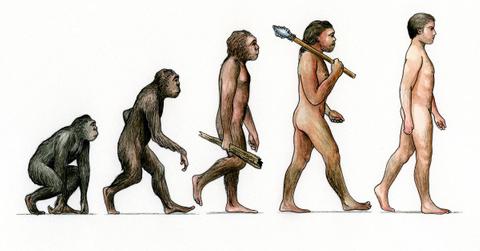Evolution Explained: How Did Humans Lose Their Tails?

Researchers say humans and apes don't have tails due to a twist of genetic fate that occurred around 25 million years ago.
A groundbreaking discovery sheds light on a pivotal moment in human evolution, revealing how our ancestors parted ways with their primate predecessors by shedding their tails around 25 million years ago.
Scientists from New York University Langone Health have unveiled insights into this transformative event. Lead researcher Dr. Bo Xia expressed his lifelong fascination with the question of how humans lost their tails.
By analyzing DNA samples from humans, tailless apes and monkeys, the team uncovered a crucial genetic difference. Monkeys lacked a specific genetic code segment present in humans and tailless apes.
Contrary to conventional mutation-driven evolution, this change was facilitated by the insertion of a genetic element called AluY, according to the study published in Nature.
This "snippet" of genetic material was randomly added to the genomes of early humans and tailless apes during ancient times. The resulting gene, when combined with TBXT, controlled the length of tails, leading to their disappearance in humans and certain apes.
Dr. Jef Boeke, Director of the Institute for Systems Genetics, highlighted the significance of this discovery. Unlike most genetic elements, AluY had a profound impact on tail length, defying expectations.
The study also suggests a connection between tail loss and the development of the coccyx, or tailbone, in humans, gorillas and chimpanzees. However, the reasons behind this evolutionary shift remain unclear.
Experiments on mice hinted at potential consequences of tail loss, such as an increased risk of neural tube defects. These defects, including conditions like spina bifida, arise when the spinal cord fails to align properly with the spine.
Never miss a story — sign up for the Front Page Detectives newsletter. Be on the scene the moment news breaks.
Dr. Itai Yanai, another study author, proposed future experiments to explore whether the loss of tails in humans played a role in the prevalence of neural tube birth defects.
This research opens new avenues for understanding the complex interplay between evolution and developmental biology.
Become a Front Page Detective
Sign up to receive breaking
Front Page Detectives
news and exclusive investigations.
